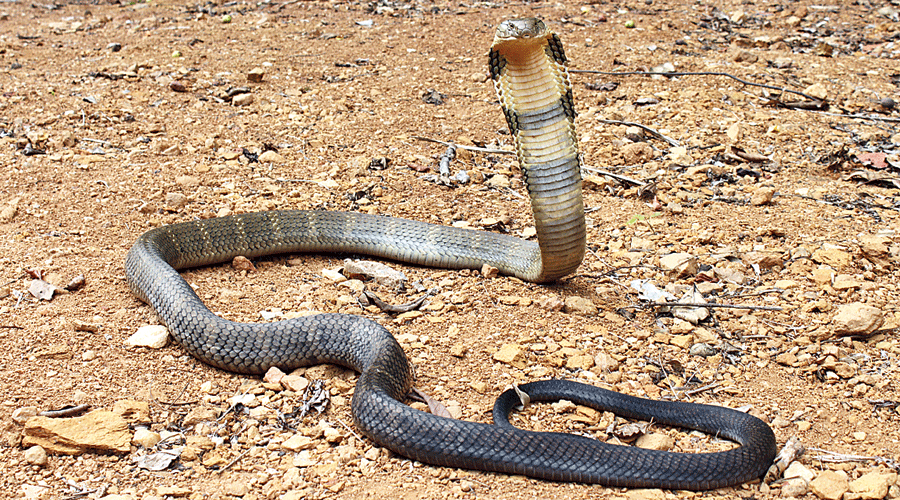The king cobra, regarded for nearly two centuries as a single species found across South and Southeast Asia, is set to be sorted into four distinct species native to specific geographical regions.
Indian scientists and their collaborators have identified four independently evolving, geographically separated king cobra species they have named the Western Ghats lineage, the Indo-Chinese lineage, the Indo-Malayan lineage and the Luzon Island lineage, found in the Philippines.
Their research provides the first evidence of multiple, unrecognised species of the Ophiophagus hannah, the zoological name of the king cobra.
The snake was first described in 1836 by the Danish zoologist Theodore Cantor who examined three specimens caught in the Sunderbans and one caught in a jungle near Calcutta.
Cantor had described the snake as a “hooded serpent with fangs and maxillar teeth” that was known locally as “sunkr choar” (shonkhochur) and frightened native snake-catchers more than the cobra.
“The existence of multiple species of the king cobra is surprising because they look similar, share similar habitats, display similar behaviour,” said Kartik Shanker, an evolutionary biologist at the Indian Institute of Science, Bangalore, and a team member.
The team led by Shankar included Priyanka Swamy, S.R. Ganesh, Gunanidhi Sahoo, S.P. Vijaykumar, Shanker and Sushil Dutta from academic institutions across India and collaborators in Sweden, Malaysia and the UK.
In their study, the researchers from India and their foreign collaborators analysed key genetic markers that indicated proximity or distance among 62 king cobra specimens collected from across the snake’s geographical range.
They used for their genetic analyses scales from wild or captive specimens; shed skin from private breeders; liver, muscle tissue, rib bones and scales from preserved specimens at a natural history museum in France; and freshly dead specimens — road kills or snakes killed by people.
Their study, published in the journal Molecular Phylogenetics and Evolution, has suggested four candidate species: CS1 in the Western Ghats; CS2 (Indo-Chinese lineage) north of the Isthmus of Kra, the Eastern Ghats, the Eastern Himalayas, southern China, Vietnam, Thailand and the Andaman Islands; CS3 in the Indo-Malayan region south of the Isthmus of Kra, peninsular Malaysia, Borneo, Bali, Sumatra, Java and Mindoro; and CS4 in the Philippines’ Luzon Islands.
“The overlap of genetic diversity with separate geographic regions suggests the species have been evolving separately without any gene flow between them,” said P. Gowri Shankar, the study’s lead researcher. “The findings have implications for the conservation of these species.”
An abundance of earlier evidence from the plant and animal kingdoms across the world had established that geographic separation can drive speciation or the emergence of distinct species.
The Western Ghats lineage, or CS1, is spatially separated from its geographically and genetically closest relative, the Indo-Chinese lineage, or CS2, by the arid regions of peninsular India.
The researchers believe the king cobra dispersed across the Southeast Asian islands during glacial periods when natural land bridges connected the islands.
Similar studies over the past two decades by independent research groups had identified the West African forest elephant, a kiwi species in New Zealand, the Sunda clouded leopard in Indonesia, an Orangutan in Sumatra and the Indus river dolphin as new species.










